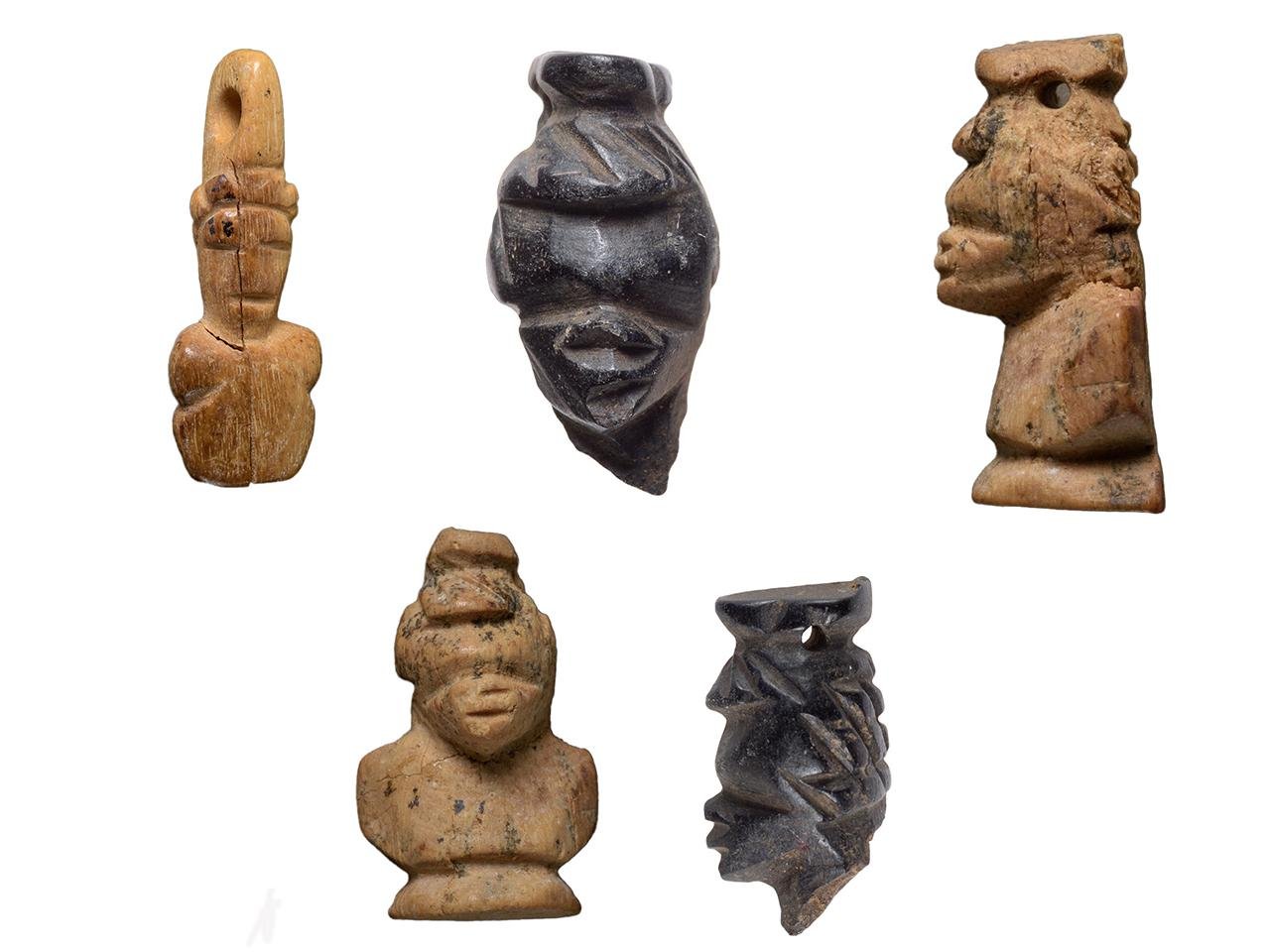Archaeologists discovered a set of rare 1,500-year-old figurines in the Negev Desert of Israel that hold the promise of new insights into the religion and cultural diversity of early Christian communities. The Israel Antiquities Authority made the discovery at Tel Malḥata in the Arad Valley, where five small sculptures were unearthed, among them two exquisitely crafted human figures carved from ebony wood—a scarce, imported material that had arrived from India or Sri Lanka.
 Figurines that were discovered in the IAA excavation. Credit: Dafna Gazit, Israel Antiquities Authority
Figurines that were discovered in the IAA excavation. Credit: Dafna Gazit, Israel Antiquities Authority
As Dr. Michael stated, “The finding is unprecedented.” Speaking with The Times of Israel, he noted that the presence of such items, particularly ones crafted from rare ebony and having African facial characteristics, highlights Tel Malḥata’s role as a cultural crossroads during the Roman-Byzantine period. These objects would have traveled along ancient trade routes before reaching the Negev.
 Heads of carved African figures discovered at the site may attest to the origin of the buried people. Credit: Dafna Gazit, Israel Antiquities Authority
Heads of carved African figures discovered at the site may attest to the origin of the buried people. Credit: Dafna Gazit, Israel Antiquities Authority
One of the ebony pieces is a delicately worked female head that is only 1.5 centimeters tall, and the other is a bust of a long-haired man with outstretched arms. Both contain holes and would have been used as pendants, intimate pieces likely of cultural or familial significance. The researchers speculate that they could have been used as symbols for ancestors or linked to idenтιтy and tradition.
 The excavation area. Credit: Svetlana Talis, Israel Antiquities Authority
The excavation area. Credit: Svetlana Talis, Israel Antiquities Authority
Though no overt Christian symbols are found in graves, the burial positions of bodies on their backs, with heads to the west, match Christian rites of this period. Tel Malḥata cemetery, dating from the 3rd century to the 8th century CE, has predominantly Christian burials along with some from pagan and early Islamic traditions. Surprisingly, no Jewish tombs have been found at the site.
 Pottery bowls, probably used in a meal related to the burial. Credit: Svetlana Talis, Israel Antiquities Authority
Pottery bowls, probably used in a meal related to the burial. Credit: Svetlana Talis, Israel Antiquities Authority
The graves with ebony figurines belonged to a woman aged 20–40 and a child aged six to eight years, buried side by side. Scholars speculate that they could have been mother and child. Their shared burial and the fact that the pendants were so closely positioned reinforce the idea that the figurines carried personal or familial meaning.
 Along with the figurines, glᴀssware, alabaster jewelry, and bronze bracelets were also found. Credit: Svetlana Talis, Israel Antiquities Authority
Along with the figurines, glᴀssware, alabaster jewelry, and bronze bracelets were also found. Credit: Svetlana Talis, Israel Antiquities Authority
Although their origins remain unknown, the discovery of African-style figurines in one of the cemeteries in the Negev shows that the early Christian community in this region was not only religiously but also ethnically and culturally diverse. As Dr. Michael said, the Horn of Africa was Christianized around the same period these individuals were buried.
The research on these findings is now published in Issue 117 of the Israel Antiquities Authority’s ʼAtiqot journal.





